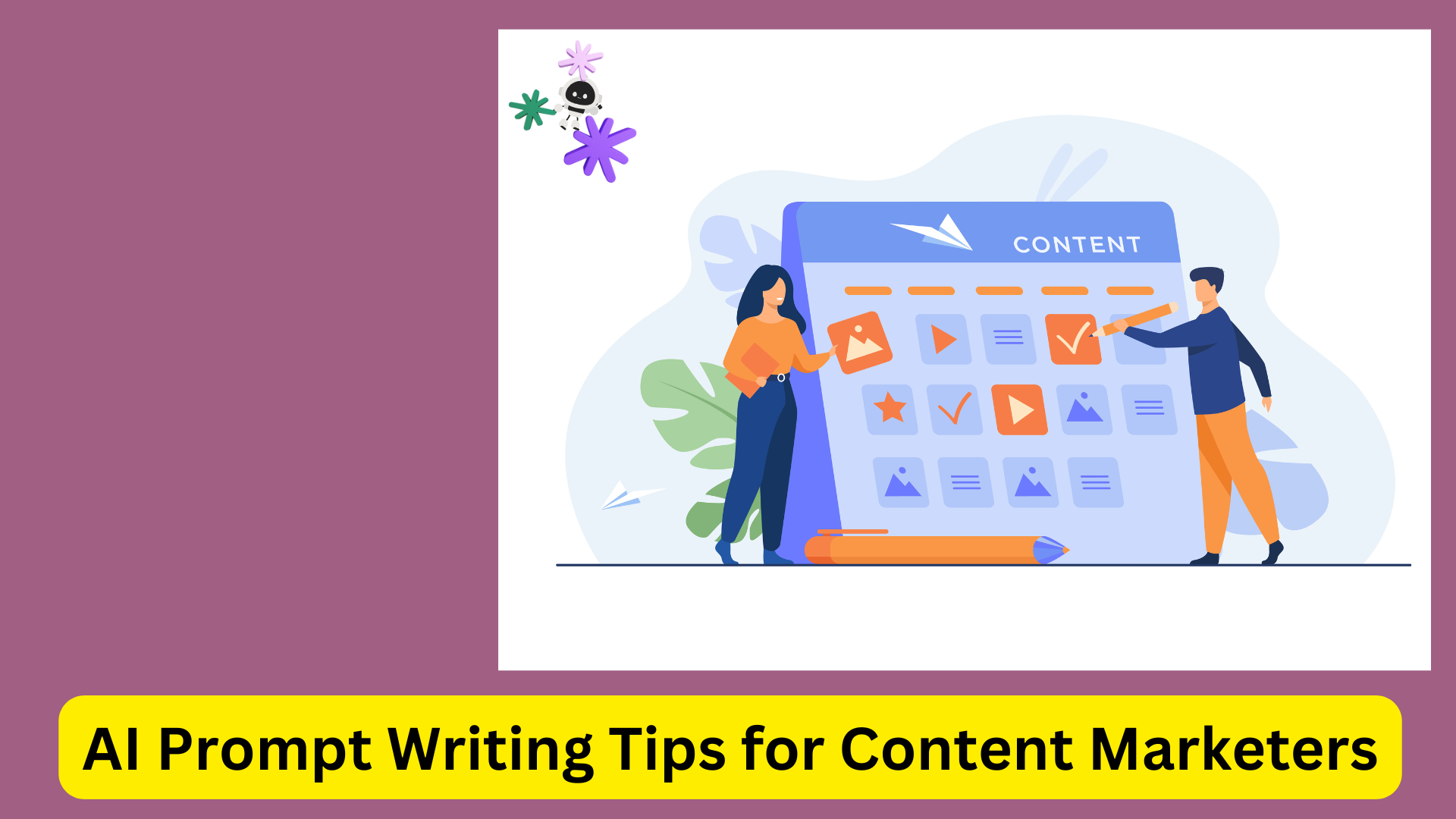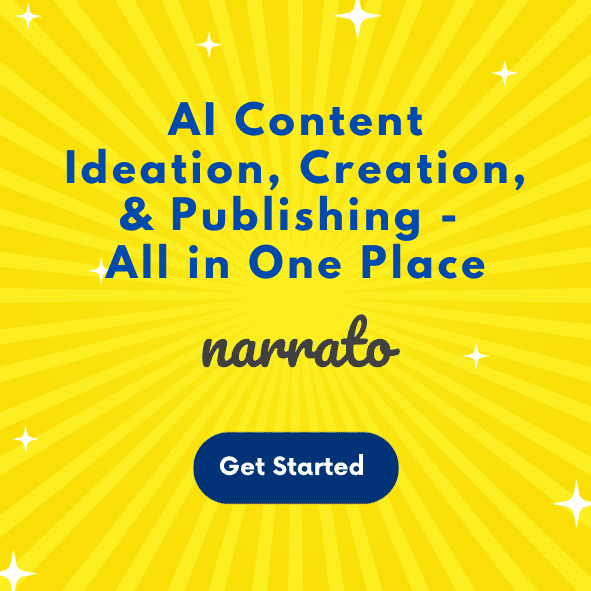According to Influencer Marketing Hub, just over 69% of marketers are using artificial intelligence in their operations. For good reason: it allows companies to create, analyze, and optimize content faster tailored to the needs of the target audience, which improves advertising. Unlocking AI’s potential for content creation lies in guiding the system to produce content based on your request, or what is known as AI prompting.
What are AI prompts? Why use them?
Structure of a successful prompt
Real life examples of AI prompts
- Content strategy development prompt
- Blog post creation prompt
- Social media prompt
- Email marketing sequence prompt
- Product description optimization prompt
Subtleties and secrets of improving prompts
Avoiding common AI prompt writing mistakes

What Are AI Prompts and Why Are They Needed?
AI prompts act as the bridge between human intent and artificial intelligence output. These are more or less like specific instructions you provide to an AI system, just like briefing a content writer, but with a few differences. While communicating with AI, each word is important, and how you frame your request leads directly to the quality of the output you get.
AI prompts for content creation are strings of texts guiding the models exactly to create, analyze, or solve what is being instructed. As a content marketer, the prompt will be an intrinsic tool inside the workflow in content creation. It gives you the control of creative direction.
The need for great prompts is rooted in the very foundational nature of the AI language model, where models operate based on the recognition of patterns and statistical relationships in their training data. This makes prompt writing a critical skill needed when looking to effectively engage the power of AI.
Effective prompts for content creation using tools like ChatGPT offer the following:
- Clarity about the exact thing you are asking for.
- Relevant context which helps the AI model to create content that matches your brand voice, target audience, and marketing objectives.
- Clear purpose which gives it direction toward producing an output to serve your particular marketing goals.
The difference between a generic prompt, “Write a blog post about marketing,” and a more focused one, which might specify tone, audience, key points, and desired outcomes, is significant. This will definitely improve your copies.
The Structure of a Successful Prompt
So, let’s discuss in detail the correct structure of copywriting prompts.
Role Specification
Setting the right perspective is an important first step in the creation of effective ChatGPT prompts for blog posts. Starting with “You are a marketing expert” or “Act as an experienced content strategist,” you can calibrate the AI’s responses to be on par with marketing professionals.
It’s a lot like briefing a new member of your team regarding the role they will have within a project. The better the position is explained, the more aligned their contributions will be.
Clear Task Descriptions and Outcomes
The second critical ingredient is to clearly describe the task and the desired result. This is beyond stating what you want. This has to be detailed to guide the AI toward what you want.
For example, instead of asking, “Write about email marketing”, a well-framed prompt would be: “Create a 1000-word guide about email marketing best practices for B2B companies, focusing on open rate optimization and including relevant statistics from 2023-2024.
Whether you’re writing blog posts, creating engaging social media content, or even outsourcing content to a research paper writing service using good ChatGPT prompts, you could provide ideas that have the potential to perform.
Example of a Step-By-Step Prompt Structure
Now, let’s break it down component by component:
- Problem definition provides context to your needs within a larger perspective. Example: “Our B2B software company needs to raise the engagement rate of our blog, and we want to create more compelling content.” This allows the AI to understand what greater objective is behind the specific request.
- Problem formulation tightens the specific aspect you are addressing. In our example, this would go like this: “We need educational content that explains complex software features in an accessible way while maintaining a professional tone.” This gives the AI clear parameters within which to create content.
- Outcome specification is all about defining exactly what success looks like. Example: “Write an article that incorporates real-world examples, technical explanations with analogies, and actionable implementation steps. The content should position us as thought leaders while remaining approachable to non-technical decision-makers.”
Remember that AI models have information processed sequentially, so structure your copywriting prompts logically. Move from general context to specific requirements.

Real-Life Examples of AI Prompts
Here are examples of ChatGPT prompts that generate effective content aligned to objectives. ChatGPT is integrated into AI content writing assistant Narrato — here’s how the prompts worked when they were tried on the platform.
Content Strategy Development Prompt
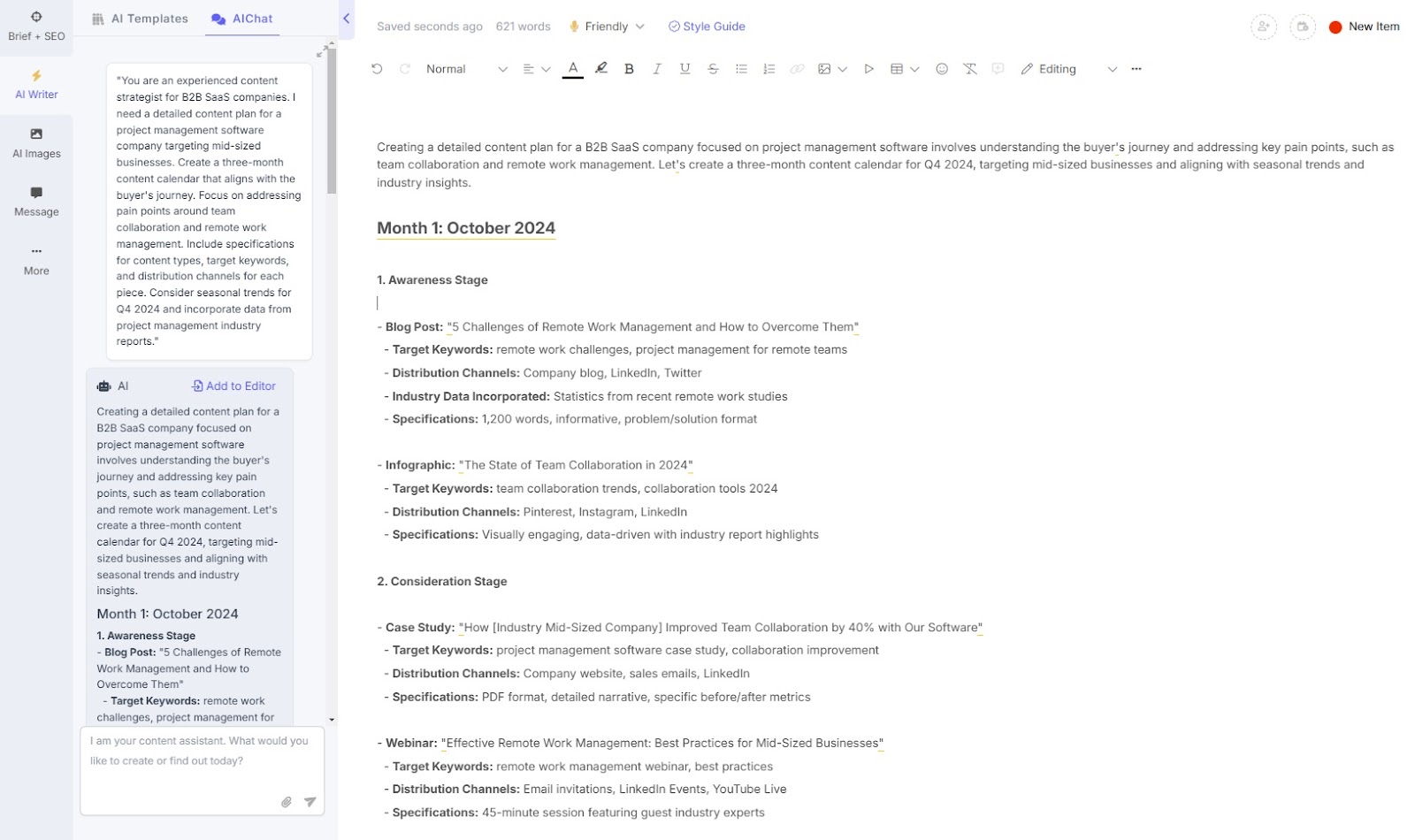
“You are an experienced content strategist for B2B SaaS companies. I need a detailed content plan for a project management software company targeting mid-sized businesses. Create a three-month content calendar that aligns with the buyer’s journey. Focus on addressing pain points around team collaboration and remote work management. Include specifications for content types, target keywords, and distribution channels for each piece. Consider seasonal trends for Q4 2024 and incorporate data from project management industry reports.”
Blog Post Creation Prompt
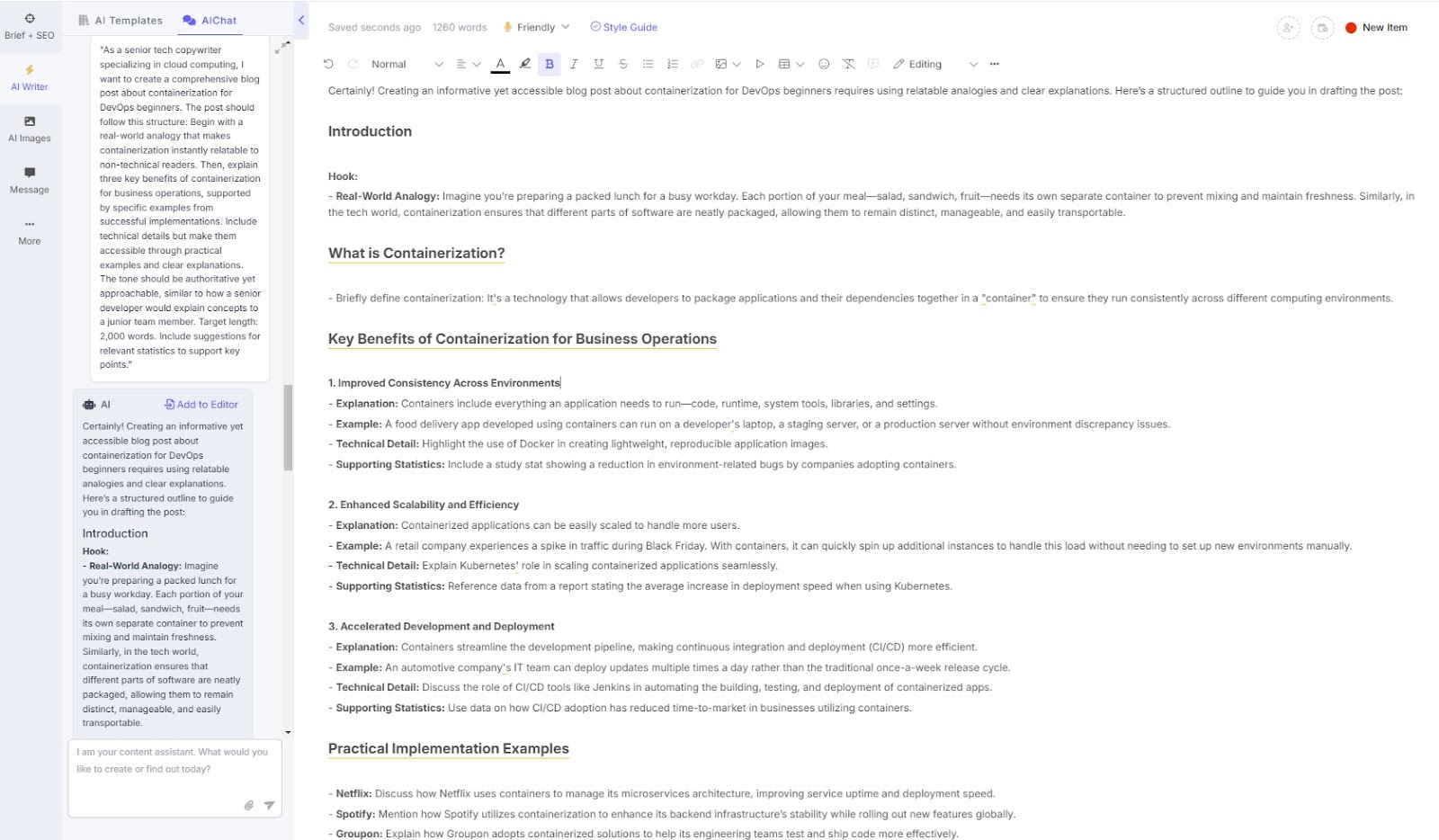
“As a senior tech copywriter specializing in cloud computing, I want to create a comprehensive blog post about containerization for DevOps beginners. The post should follow this structure: Begin with a real-world analogy that makes containerization instantly relatable to non-technical readers. Then, explain three key benefits of containerization for business operations, supported by specific examples from successful implementations of the best kubernetes management tools. Include technical details but make them accessible through practical examples and clear explanations. The tone should be authoritative yet approachable, similar to how a senior developer would explain concepts to a junior team member. Target length: 2,000 words. Include suggestions for relevant statistics to support key points.”
Social Media Campaign Prompt

“Take on the role of a social media marketing specialist for a sustainable fashion brand. Create a series of 5 interconnected LinkedIn posts announcing our new eco-friendly winter collection. Each post should be 1200-1500 characters long and incorporate storytelling elements about our sustainable manufacturing process. Include specific calls-to-action that drive engagement without being overly promotional. The tone should balance professional expertise with environmental consciousness. Reference current sustainability trends in the fashion industry and include suggestions for relevant hashtags. The posts should build upon each other, creating a narrative arc that culminates in the collection launch.”
Email Marketing Sequence Prompt
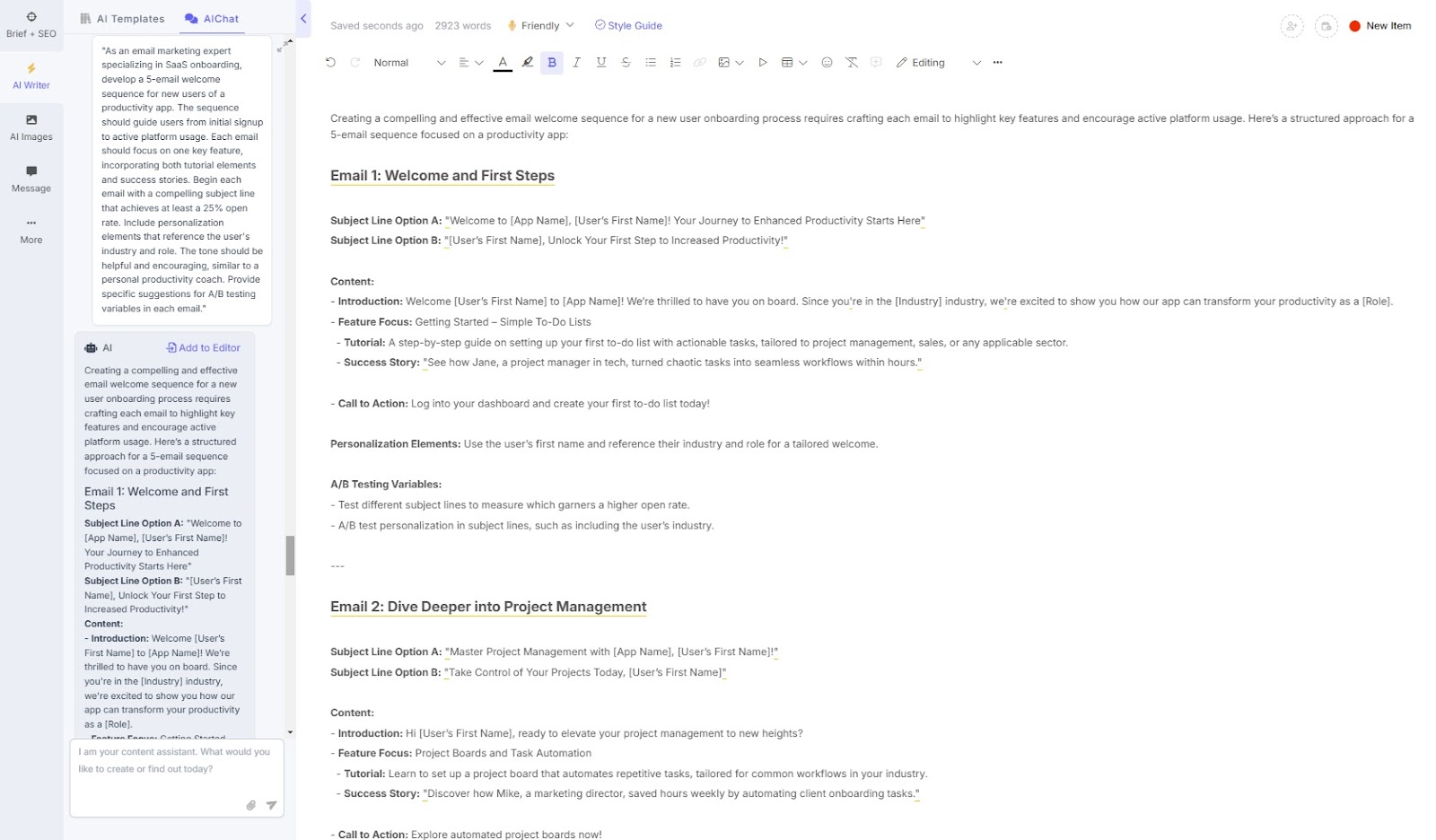
“As an email marketing expert specializing in SaaS onboarding, develop a 5-email welcome sequence for new users of a productivity app. The sequence should guide users from initial signup to active platform usage. Each email should focus on one key feature, incorporating both tutorial elements and success stories. Begin each email with a compelling subject line that achieves at least a 25% open rate. Include personalization elements that reference the user’s industry and role. The tone should be helpful and encouraging, similar to a personal productivity coach. Provide specific suggestions for A/B testing variables in each email.”
Product Description Optimization Prompt
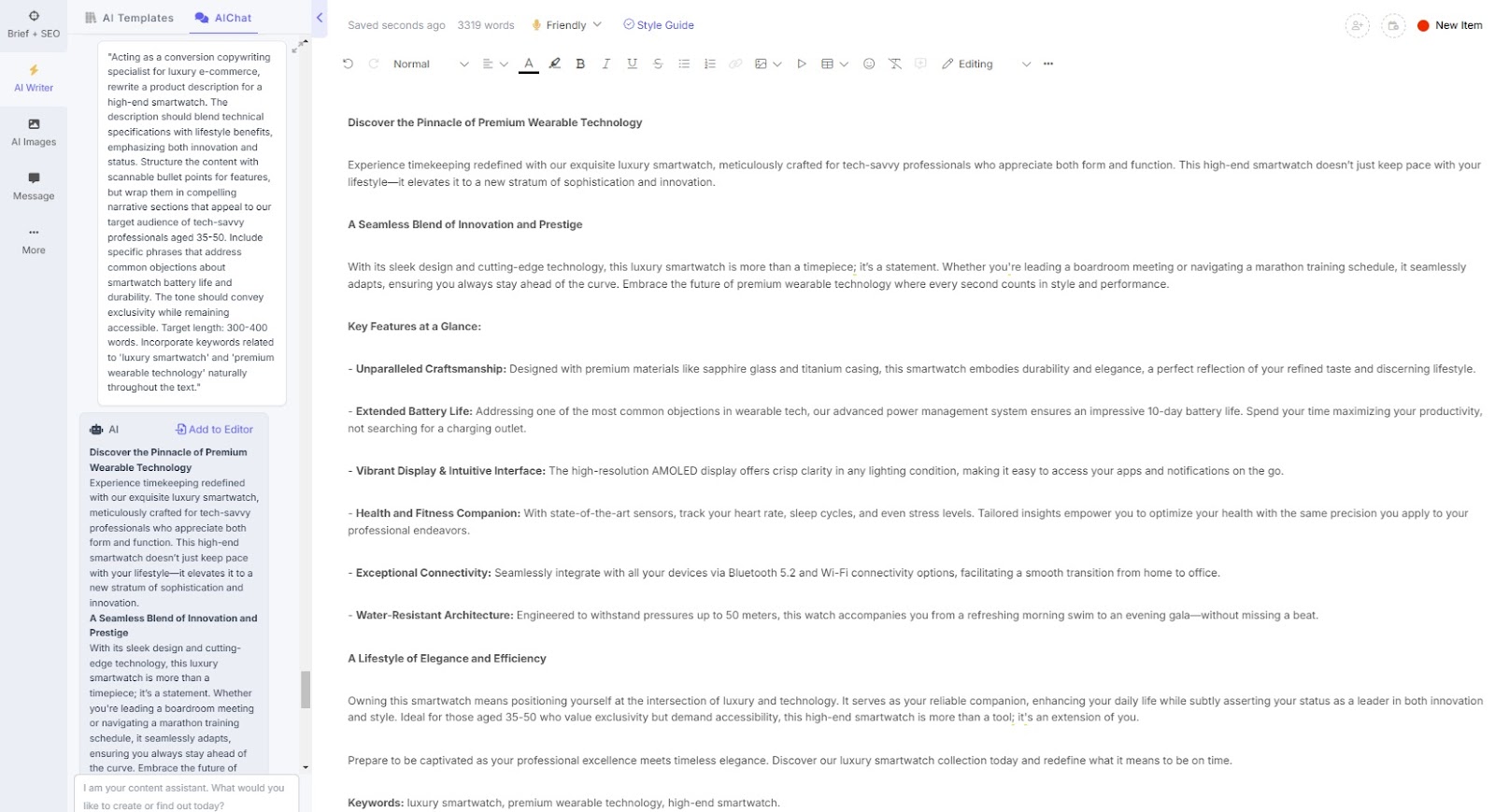
“Acting as a conversion copywriting specialist for luxury e-commerce, rewrite a product description for a high-end smartwatch. The description should blend technical specifications with lifestyle benefits, emphasizing both innovation and status. Structure the content with scannable bullet points for features, but wrap them in compelling narrative sections that appeal to our target audience of tech-savvy professionals aged 35-50. Include specific phrases that address common objections about smartwatch battery life and durability. The tone should convey exclusivity while remaining accessible. Target length: 300-400 words. Incorporate keywords related to ‘luxury smartwatch’ and ‘premium wearable technology’ naturally throughout the text.”
The Subtleties and Secrets of Improving Prompts
Perfecting ChatGPT prompts for blog posts is like refining a recipe. Every tiny adjustment can make all the difference. The first prompt you create is rarely going to be the best prompt. Rather than settling with a first draft, successful content marketers know that prompt refinement is an iterative process. As you refine your copywriting prompts, remember that you’re trying to fill in the details that will help the AI get to the desired outcome. This is just like you would provide an expert writer with specific instructions.
Incorporating specific data transforms generic copywriting prompts into powerful content generators. Instead of asking for broad topic coverage, weave in industry statistics, benchmark data, or performance metrics. This data-driven approach guides the AI toward creating evidence-based content that resonates with your target audience’s specific needs and challenges.
Once the basics are covered, you can attempt the next levels: contextual framing, audience journey mapping, and multi-step content development. Advanced strategies will take your copywriting standards beyond just the creation of ‘sufficient’ content to that which truly outshines the real engagement of your target audience and drives your marketing objectives.

Common AI Prompt Mistakes and How to Avoid Them
Here are the top 3 ChatGPT prompts for content creation mistakes you must be aware of.
Vague Instructions
The moment you say something like, “Create content about digital marketing,” you’re asking the AI to make too many assumptions. This vagueness often leads to general shallow content that cannot fulfill your actual marketing objectives.
Contrarily, check how clear it gets when you reword to: “Create a definitive guide to data-driven digital marketing for SaaS companies, focusing on CAC and LTV metrics.”
Sometimes, content marketers think that AI will guess what they want, similar to how a human colleague might. However, AI needs clear guidance on what type of content is needed, along with style and purpose.
Instead of saying, “Write about social media marketing,” say: “Create a step-by-step tutorial explaining how B2B companies can leverage LinkedIn for lead generation, including specific action items and measurement metrics.”
Conflicting Requirements
This happens when marketers combine a lot of requirements without considering whether they logically fit together. For example, “highly technical content that absolute beginners can understand” is paradoxical and will confuse the AI.
You could rephrase this as, “technical content that uses analogies and real-world examples to explain complex concepts to business decision-makers with limited technical background.”
Mastering Prompts Unlocks Gen AI’s Content Writing Potential
AI opens new horizons in content marketing because it provides the tools to create content quickly and efficiently. It:
- Automates routine tasks
- Writes text
- Creates visual content
- Helps personalize communication
- Provides an opportunity to adapt materials to the needs of the audience quickly
The harmonious combination of copywriting prompts with human experience and creativity will help you get the maximum benefits from the content creation prowess of Gen AI. You will be able to create engaging content faster and gain more time to focus on the more creative or strategic aspects of your work.


